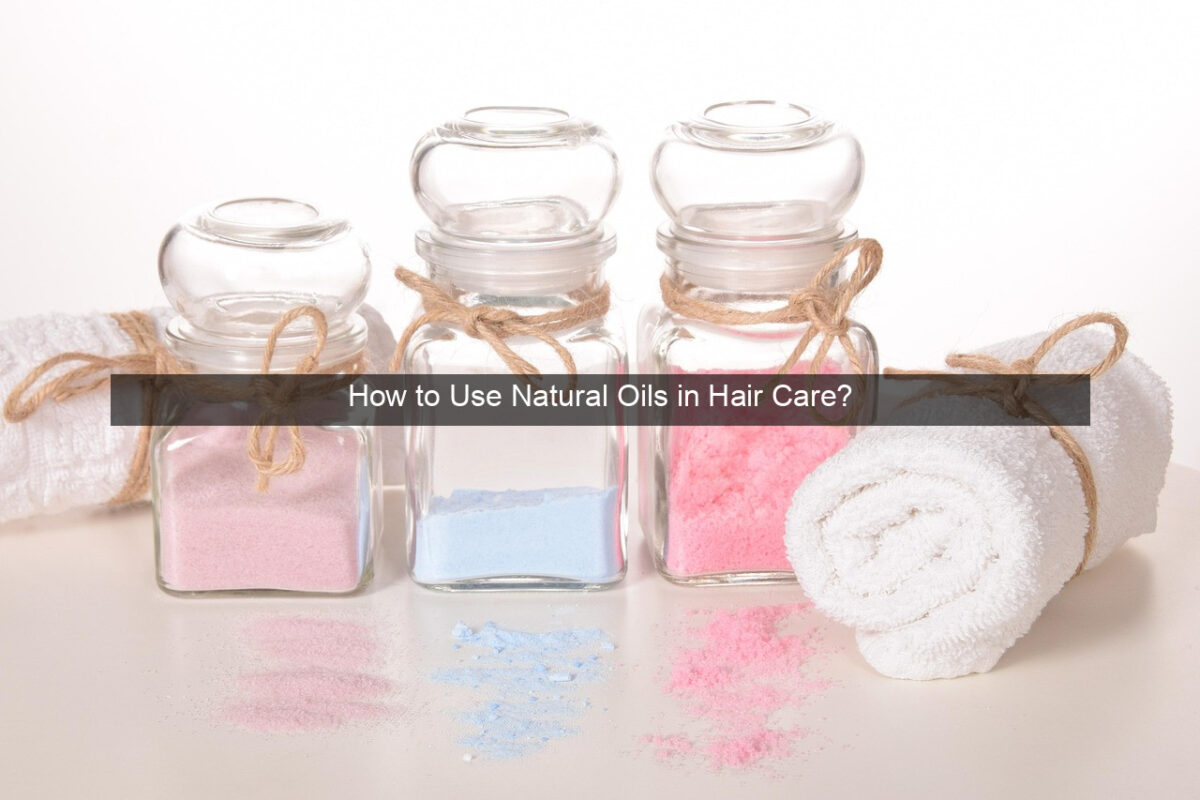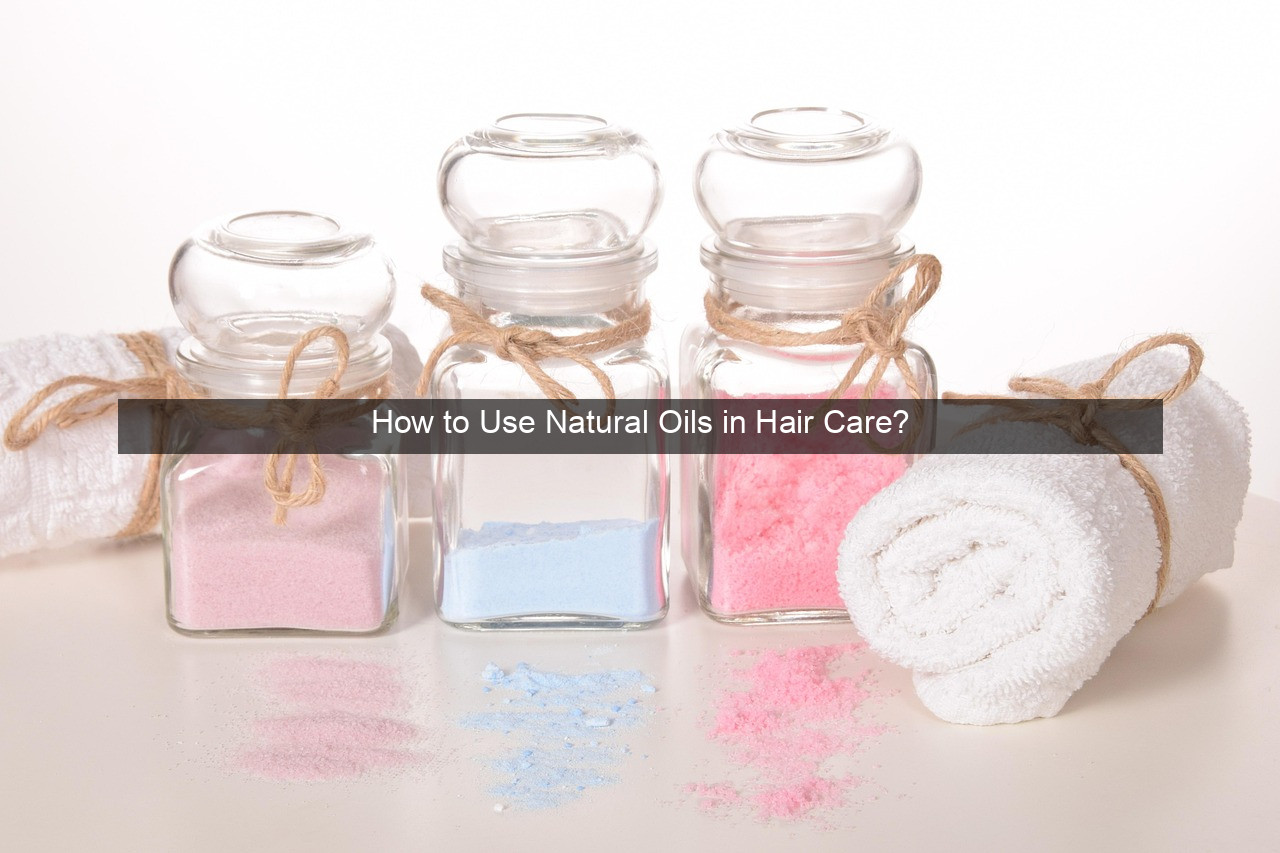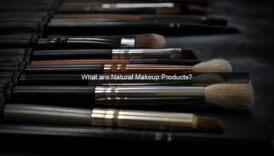How to Use Natural Oils in Hair Care?

- How to Use Natural Oils in Hair Care?
- Unlocking the Power of Natural Oils for Luscious Hair
- Choosing the Right Oil for Your Hair Type
- Understanding Your Hair's Needs
- Exploring Popular Natural Oils
- Creating Your Personalized Oil Blend
- Incorporating Oils into Your Hair Care Routine
- Pre-Shampoo Treatments
- Leave-in Conditioners and Styling Aids
- Scalp Massages for Enhanced Absorption
- Understanding Different Hair Types and Oil Suitability
- Fine Hair
- Medium to Thick Hair
- Curly Hair

Unlocking the Power of Natural Oils for Luscious Hair
For centuries, natural oils have been treasured for their remarkable ability to enhance hair health and beauty. From ancient civilizations to modern-day hair care routines, these potent elixirs offer a wealth of benefits for all hair types. Whether you’re struggling with dryness, frizz, breakage, or simply seeking to elevate your hair’s natural radiance, incorporating natural oils can transform your hair care regimen. This comprehensive guide delves into the world of natural oils, exploring their diverse properties and providing practical tips on how to integrate them seamlessly into your routine for truly stunning results. Discover the secrets to unlocking your hair’s full potential with the power of nature’s finest oils.

Choosing the Right Oil for Your Hair Type
Understanding Your Hair’s Needs
Before embarking on your natural oil journey, it’s crucial to understand your hair’s unique characteristics and needs. Different hair types require different approaches, and selecting the right oil is paramount for achieving optimal results. Consider factors such as your hair’s texture (fine, medium, or thick), porosity (low, medium, or high), and any specific concerns you may have, such as dryness, damage, or dandruff. This knowledge will guide you towards choosing oils that best address your individual hair care goals.
Fine hair benefits from lighter oils that won’t weigh it down, while thicker hair can tolerate heavier, more moisturizing oils. If your hair is prone to dryness, look for oils rich in emollients. For damaged hair, oils with reparative properties are ideal. By carefully assessing your hair’s needs, you can tailor your oil selection for maximum effectiveness.
Understanding your hair’s porosity is also key. Porosity refers to your hair’s ability to absorb moisture. Low porosity hair has tightly bound cuticles, making it difficult for moisture to penetrate. High porosity hair has raised cuticles, allowing moisture to enter and escape easily. Choosing the right oil based on porosity ensures optimal absorption and benefit.
Exploring Popular Natural Oils
The world of natural oils offers a vast array of options, each with its unique properties and benefits. Some popular choices include coconut oil, known for its moisturizing and conditioning properties; argan oil, rich in antioxidants and vitamins; jojoba oil, which closely mimics the scalp’s natural sebum; and castor oil, believed to promote hair growth. Researching the specific benefits of each oil will help you determine which ones align with your hair care objectives.
Olive oil is another excellent option, offering deep hydration and shine. Avocado oil is packed with nutrients and can help repair damaged hair. Almond oil is lightweight and ideal for adding shine and smoothness. The diversity of natural oils ensures there’s a perfect match for every hair type and concern.
Experimenting with different oils can help you discover which ones work best for your individual needs. Start with small amounts to avoid over-saturating your hair, and observe how your hair responds. You may find that a combination of oils provides the most comprehensive benefits.
Creating Your Personalized Oil Blend
Once you’ve identified oils that suit your hair type, consider creating a personalized blend to maximize their benefits. Combining oils allows you to target multiple concerns simultaneously, such as dryness and frizz, or damage and slow growth. For instance, a blend of coconut oil and argan oil can provide intense moisture and shine, while a mix of castor oil and jojoba oil may promote hair growth and balance scalp oil production.
When creating your blend, start with a base oil, such as coconut oil or jojoba oil, and then add smaller amounts of other oils to address specific concerns. Experiment with different ratios until you find the perfect combination for your hair. Store your blend in a clean, airtight container in a cool, dark place to preserve its potency.
Creating a personalized blend allows you to customize your hair care routine and achieve targeted results. It’s a fun and rewarding way to harness the power of natural oils and create a truly unique hair care experience.
Incorporating Oils into Your Hair Care Routine
Pre-Shampoo Treatments
One of the most effective ways to use natural oils is as a pre-shampoo treatment. Applying oil to your hair before washing helps to protect it from the harsh effects of shampooing, preventing dryness and damage. Simply massage a generous amount of your chosen oil or blend into your hair and scalp, focusing on the ends, which tend to be the driest. Leave the oil on for at least 30 minutes, or even overnight, for deep conditioning.
Pre-shampoo treatments are particularly beneficial for dry, damaged, or frizzy hair. The oil helps to replenish moisture, smooth the hair cuticle, and detangle knots, making hair more manageable and less prone to breakage. This practice can significantly improve the overall health and appearance of your hair.
For those with oily scalps, pre-shampoo treatments can also be beneficial. Contrary to popular belief, oil can actually help to regulate sebum production. By applying oil to the scalp before shampooing, you can help to balance oil production and prevent excessive greasiness.
Leave-in Conditioners and Styling Aids
Natural oils can also be used as leave-in conditioners and styling aids. After washing and towel-drying your hair, apply a small amount of oil to the ends to seal in moisture, add shine, and tame frizz. This is particularly helpful for those with dry or curly hair, as it helps to define curls and prevent flyaways.
When using oil as a leave-in conditioner, start with a small amount and add more as needed. Too much oil can weigh down your hair and make it appear greasy. Focus on the ends and avoid applying oil directly to the scalp, especially if you have an oily scalp.
Certain oils, such as argan oil and jojoba oil, are particularly well-suited for use as leave-in conditioners due to their lightweight texture and ability to absorb quickly into the hair. They can help to smooth the hair cuticle, add shine, and protect hair from environmental damage.
Scalp Massages for Enhanced Absorption
Scalp massages are a fantastic way to enhance the absorption of natural oils and promote healthy hair growth. Gently massaging your scalp with oil stimulates blood circulation, which delivers essential nutrients to the hair follicles. This can help to strengthen hair roots, reduce hair loss, and promote faster hair growth.
When performing a scalp massage, use your fingertips to apply gentle pressure in circular motions. Start at the front of your scalp and work your way back. Continue massaging for 5-10 minutes, focusing on areas where you experience hair thinning or loss.
Scalp massages can be performed with or without oil. If using oil, choose an oil that promotes hair growth, such as castor oil or rosemary oil. Warm the oil slightly before applying it to your scalp for enhanced absorption.
Understanding Different Hair Types and Oil Suitability
Fine Hair
Fine hair requires lightweight oils that won’t weigh it down or make it appear greasy. Argan oil, grapeseed oil, and jojoba oil are excellent choices for fine hair. These oils are easily absorbed and provide moisture and shine without adding bulk.
Avoid using heavy oils like coconut oil or olive oil on fine hair, as they can make it look limp and lifeless. If you do choose to use these heavier oils, apply them sparingly and focus on the ends of your hair.
When applying oil to fine hair, start with a small amount and add more as needed. It’s always better to start with less and add more than to start with too much and end up with greasy hair.
Medium to Thick Hair
Medium to thick hair can tolerate heavier oils that provide deep moisture and nourishment. Coconut oil, olive oil, avocado oil, and shea butter are excellent choices for these hair types.
These heavier oils can help to tame frizz, define curls, and add shine to thicker hair. They can also help to repair damage and protect hair from environmental stressors.
When applying oil to medium to thick hair, you can be more generous with the amount you use. However, it’s still important to start with a small amount and add more as needed to avoid over-saturating your hair.
Curly Hair
Curly hair is often prone to dryness and frizz, making it essential to use oils that provide intense hydration and definition. Coconut oil, argan oil, and jojoba oil are popular choices for curly hair.
These oils can





